— This post is updated in 2024 based on our most recent travels in Kenya. The section on Lake Naivasha (as an alternative to the ocean) is new. As for the other sections although the general info is still valid you can expect that the costs I mention are higher now. —
Kenya is one of the best safari destinations around. If that’s not enough, head over to the coast for some Swahili culture and history, swanky cityscapes, Indian Ocean beaches and the Lamu Archipelago. And hey, to keep things interesting you can snorkel just off the coast of Somalia.
Often, travelers heading from Kenya to Tanzania fly or take a long-haul bus from Nairobi or Mombasa straight down to Dar es Salaam. But traveling along the Kenyan coast by road and breaking the journey into a few days is a great alternative and it’s fun way to travel, too. Getting around on the coast of Kenya is easy, and the infrastructure and facilities for tourism are well-developed.
If you need some inspiration before you set off beach-hopping in Kenya (really?) then read on. This post is about traveling down the north coast from Lamu Island to Mombasa, and then from Mombasa down the south coast to the Tanzanian border, with a little bit of practical information too.
Is it Safe?
Transportation
Accommodation
Money and Costs
Mombasa
The North Coast
The South Coast
Lake Naivasha
Crossing the Border to Tanzania
Is It Safe?
If you’re worried about safety in general, don’t be. Just be sensible: don’t walk around empty (or sketchy) neighborhoods in Nairobi or Mombasa, don’t go out alone after dark pretty much anywhere. Avoid deserted beaches (especially after dark). Get your accommodation to arrange a taxi for you or book an Uber if you want to go out at night. Ask at your hotel if there is anything you should know about the area you’re in and pay attention to yourself and your things when you’re out and about.
As a solo female traveler in Kenya, I’ve never had any issues or even felt uncomfortable or unsafe.
Transportation
Travel goes fairly smoothly along the coast, without too much waiting around. Distances are short so you can make quick hops from one place to the next and still have most of the day to enjoy yourself (or if you’re like me, you can even enjoy yourself while actually travelling). Use buses and matatus to go from one town to the next and fill in the gaps, or zip around town, by boda-boda. I usually check in advance with my guesthouse or a local (not a driver) about how much any given trip should cost.
The roads along the coast are in ok condition. Vehicles are usually less-so and somewhat crowded as well, and seatbelts are rarely used/available. Drivers are often reckless. You should stay off the roads after dark. It’s better not to arrive at your next place in the dark anyway.
Transport is a mixed bag. You’ll probably end up using all of the following:
- Taxis, Uber, Tuk-Tuks. Mainly for in and around a town. Follow your route on your GPS. You can order boda-bodas on Uber too. Tuk-tuks in some coastal towns run set routes and you can pay for a seat and share with whoever is already in it.
- Boda-bodas (motorcycle taxis). These are all over the coastal towns, where you are less likely to find regular taxis.
- Matatus (minibusses). For shorter distances between towns, and longer distances in more remote areas where the big buses don’t run. You generally pick one up at the local ‘stage’ (station) where they all gather. They depart when full, are fairly frequent, and can be a bit crowded. Here they do seem to stick to one passenger per seat, which is something. They are usually badly driven and poorly maintained.
- Local Buses. There are regular buses running along the coast as well.
Accommodation
There is not a huge proliferation of hostels in Kenya, but there are some here and there. There are lots of nice guesthouses and mid-range options, and definitely both top-end luxury (expensive) beach hotels and sprawling resort-type setups.
You don’t need to book in advance (outside high season) unless you’re very particular about where you stay, or if you’re arriving at night. I find my accommodation on Booking.com (or similar), on Maps.me, or just by looking around. I’ve had some memorable accommodation in Kenya (I mean that in a good way) from my own little banda in the woods; a treehouse by the beach; a lofty space in the top of a restored Swahili villa; a luxury tented camp; a sparse little room in a family guesthouse; and a dorm in a tent thrown in for good measure.
Although you’ll (almost) always be able to find WiFi, you should pick up a sim card anyway.
Money and Costs
Currency: Kenyan Shilling (KSh)
ATMs are available in the major towns along the coast. They are mostly reliable but I still wouldn’t wait until my cash dwindled down to nothing before drawing more. Bigger and better hotels will take credit card but you obviously need cash for shops and transportation.
If you’ve been to Tanzania or Uganda you’ll notice stuff costs more in Kenya. Accommodation is your biggest expense but you can find dorms (around 15+ USD) or your own basic single/double room in the 15 to 35 USD range. Transport is cheap; so is local food (like, a couple of dollars for a meal). Western food will cost you more (a bit or a lot more, depending on the restaurant) but you can get a good meal for around 600-800 KSh (6-8 USD).
As a solo traveller I usually have to get a double room myself (my only standards there are ‘safe’ and ‘clean’), and I like to eat good food and drink coffee and wine indiscriminately. Keeping that in mind, my basic costs would be approximately:
- Around 40-45 USD/day in Nairobi and even less than 40 USD/day in Mombasa.
- On the coast around 40-45 USD/day – not including transportation from town to town. A few extra dollars per travel-day covers these short-distance hops.
That’s also not including entrance to sites/activities like snorkeling, hiring a guide, etc.
Mombasa
Mombasa is your likely starting point for a trip on the coast in either direction. Give yourself a couple of days in the city too, there’s plenty to see and do. I flew from Nairobi to Mombasa because in December, the train (which I really wanted to take) was booked out for weeks. It’s not possible to book that train online before leaving home, but flights are very cheap (around 50 USD) – check Kenya Airways and Fly540.
— Update in 2024: during my latest trip I took the train back and forth between Mombasa and Nairobi three times, no issues. See this section about the train and getting tickets. —
Now, let’s talk about those beaches.
The North Coast
Lamu Island
Most foreign governments warn their citizens to stay away from Lamu County on the mainland. Because of security issues (Al-Shabaab) in that area and on the roads, it’s strongly recommended that you should travel to and from Lamu Island by air.
Exotic, Swahili, intensely atmospheric – Lamu is my favourite place on the entire coastline. There are two main areas to stay on the island: Lamu Town and Shela Beach, about thirty minutes walk apart.
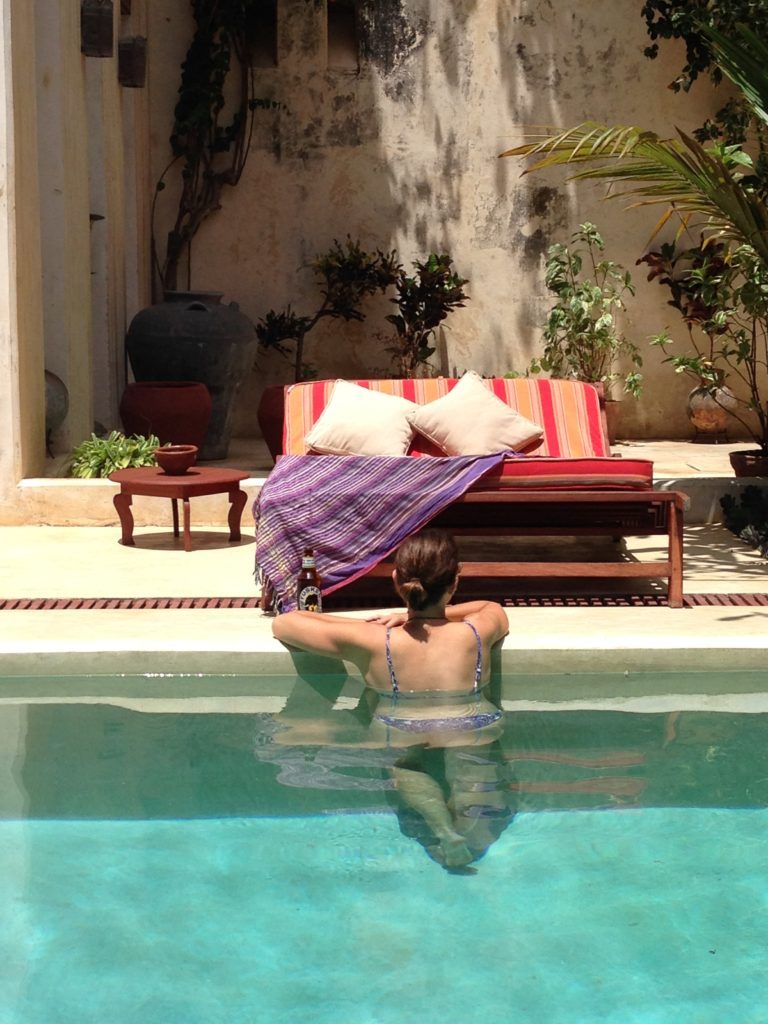
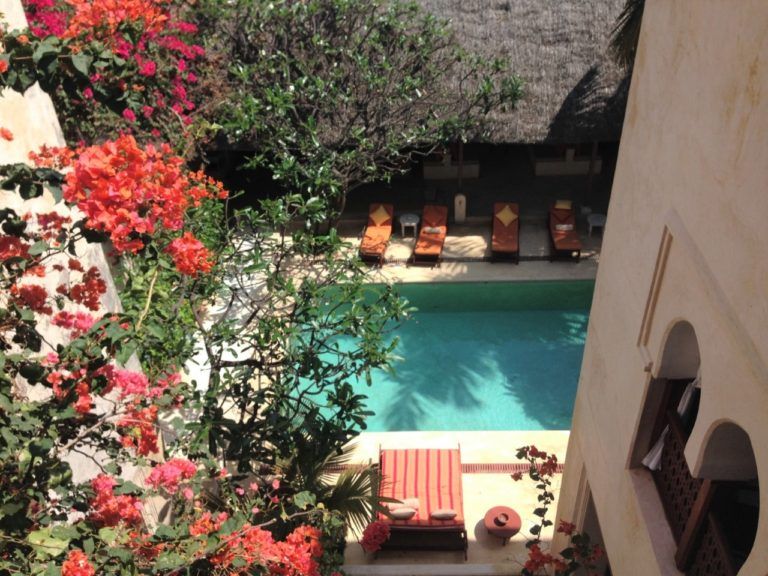
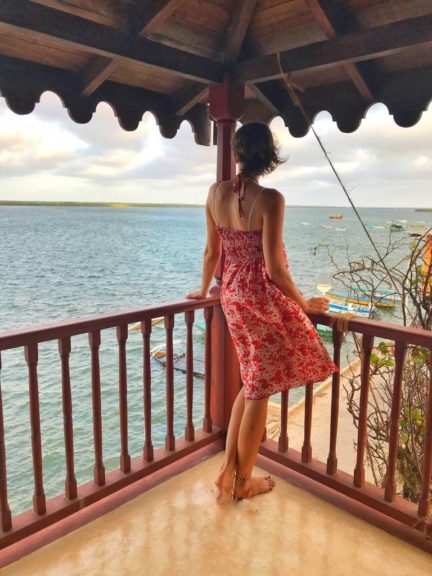
The old Lamu Town is pretty, it’s like a mini-Stone Town (Zanzibar) without the crowds. There are no vehicles on Lamu (other than some motorbikes) so when you’re wandering the twisty narrow back lanes you’ll only have to jump out of the way for the occasional pack of donkeys.
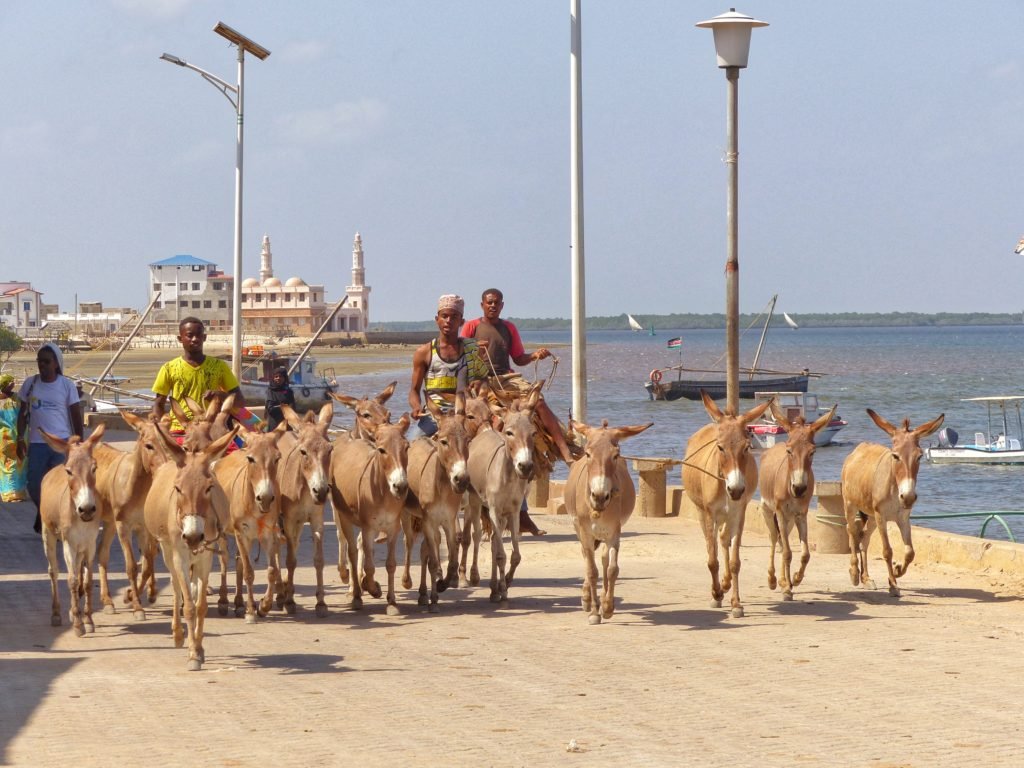
There is no beach in town, but you get the whole ocean-going feel with the long busy seafront and all the wooden boats tied up in front.
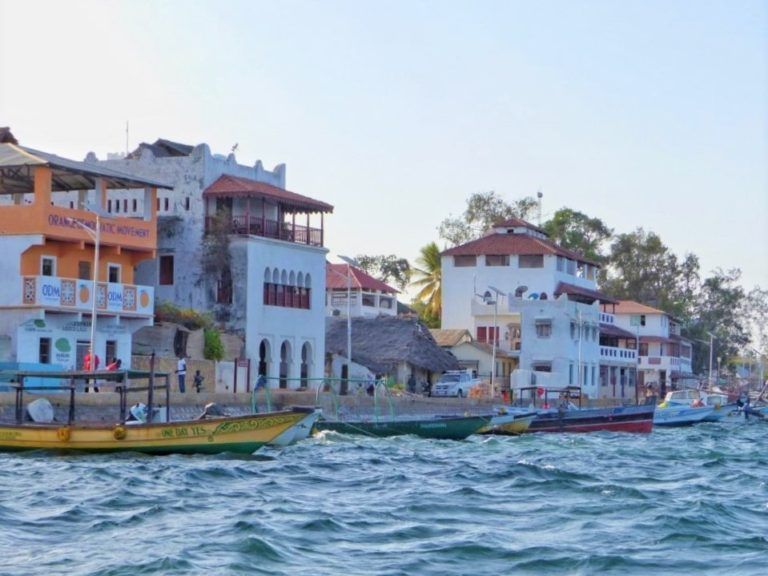
Shela has some nice, artsy shops and cafes too. The beach is twelve kilometers long, although it’s not picture-perfect tropical.
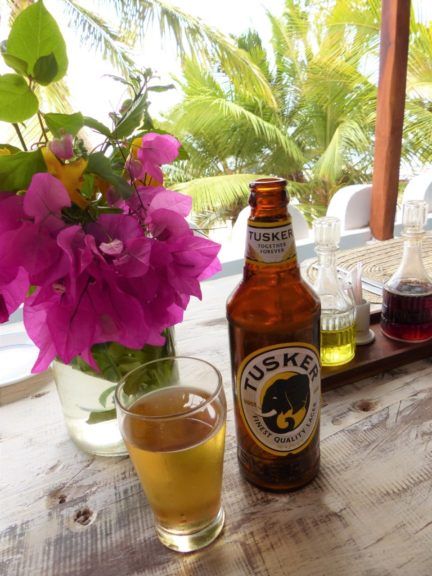
Shela, and the other two villages (Matondoni and Kipungani) are all reachable on foot or by dhow.
You should definitely spend a day out sailing in a dhow.
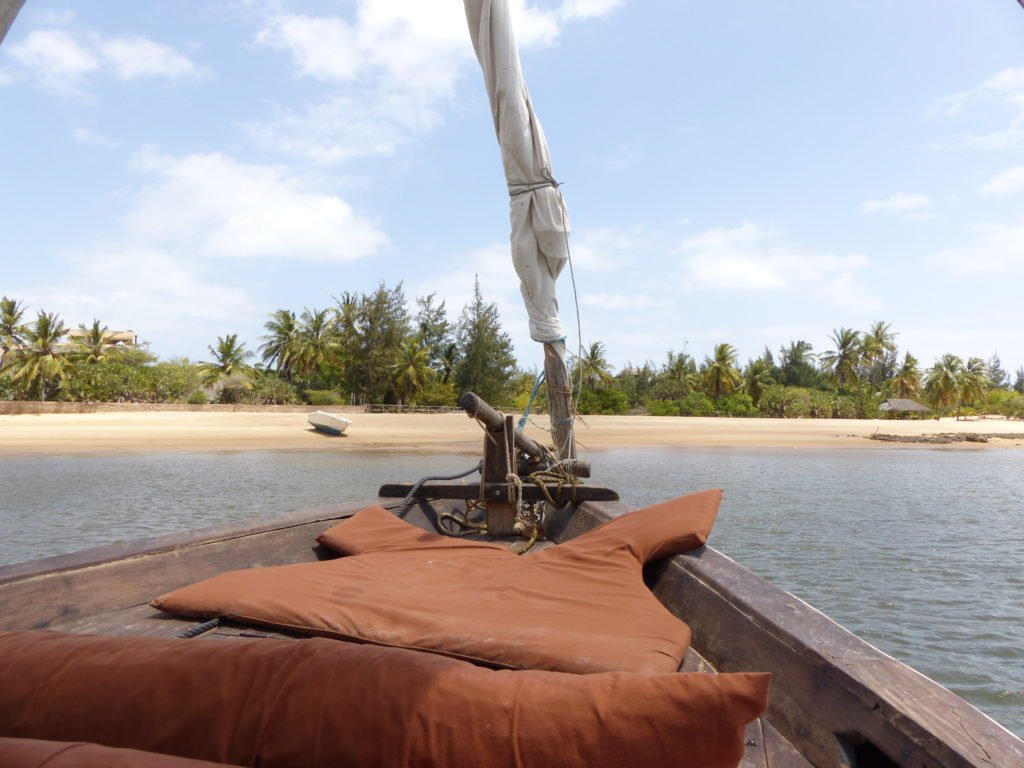
Start off before dark, catch the sunrise, sail to another beach, stop to snorkel along the way, and eat lunch on the boat.
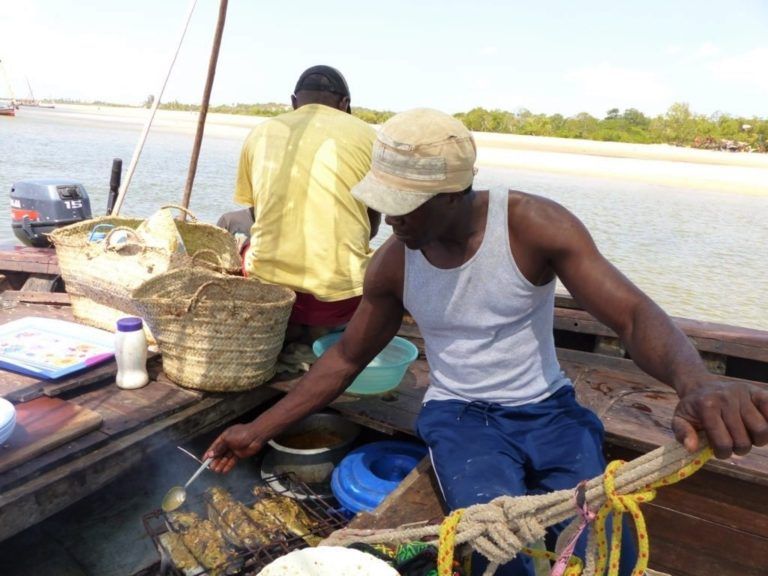
These trips are easy to arrange either through your accommodation, or with one of the many captains wandering around town (they will find you, no worries there, but I think it’s better to check with your hotel). You can also arrange a boat trip across the water to the beaches on Manda Island.
Note that the only place you can buy alcohol on the island (other than at a restaurant or your hotel of course) is the police canteen in Lamu Town. Yup, the police canteen has an off-license (of sorts). There is a super-basic supermarket (but of course, great fresh markets) and only one ATM.
Check out my story about life on Lamu, here. While you’re at it, you can read about safariing in the Mara, too.
Getting to Lamu
The Lamu Archipelago is a small group of islands, of which Lamu is the main one. I went straight from a safari in the Mara to the archipelago. There are plenty of cheap flights (Kenya Airways, Fly540, Safarilink, Silverstone) to/from Nairobi (Wilson Airport), Malindi, and Mombasa (via Nairobi). The archipelago’s tiny airport is on Manda Island, facing Lamu Town across the water. If you’ve booked a hotel they will probably arrange a speedboat-transfer to Lamu Island for you; there are also regular public ferries doing the short trip.
Watamu
For stunning beaches and a good mix of places to eat or drink and chillout, Watamu wins hands-down as far as I’m concerned. I spent a few days there and still had to basically tear myself away. Nearby Malindi is the more upmarket tourist resort, while Watamu is the more ‘low-key’ place with backpacker-ish options.
Apparently this whole stretch of coast is some kind of ‘Little Italy’ – for whatever reason, there are tons of Italians here. And so, the delicious stuff that comes with them – aperol spritz, espresso, good pizza and so on, abounds.
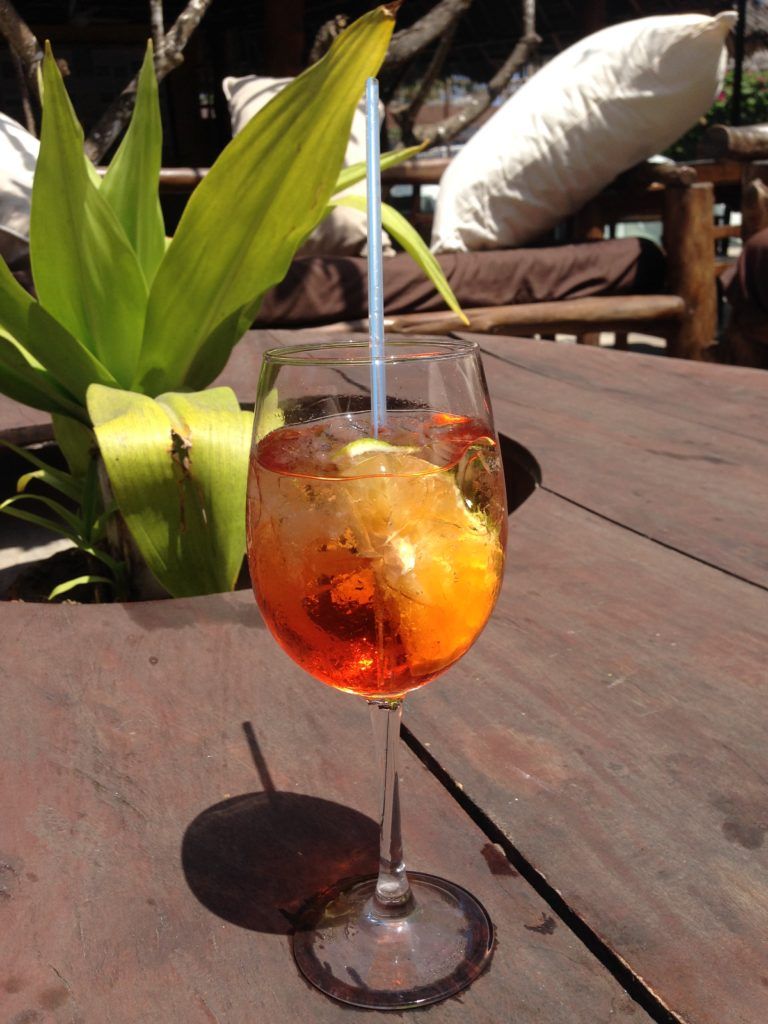
But be forewarned: there are a lot of beach boys around shouting ‘Ciao bella come stai?’ and any walk on the beach will be punctuated with these guys trying to show you starfish and sell you stuff or get you onto a boat trip or out for drinks. You also get a lot of kids chanting ‘Ciao Jambo, Jambo Ciao’ which is kind of hilarious.
While you’re in town, the Gede Ruins are worth a visit.
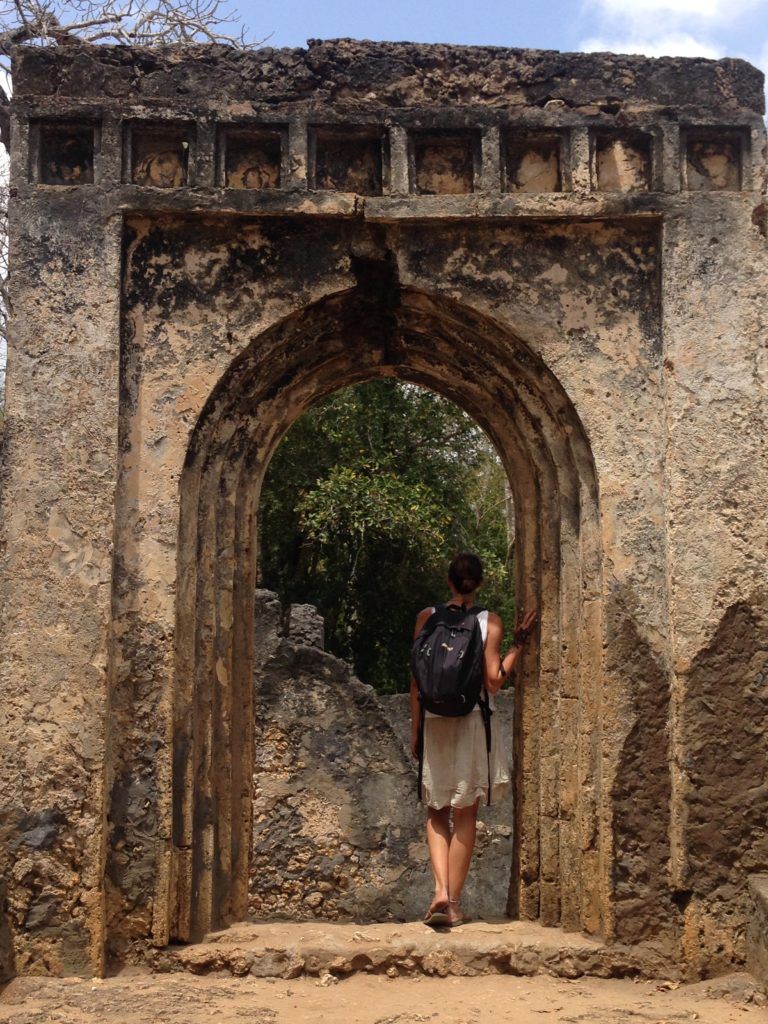
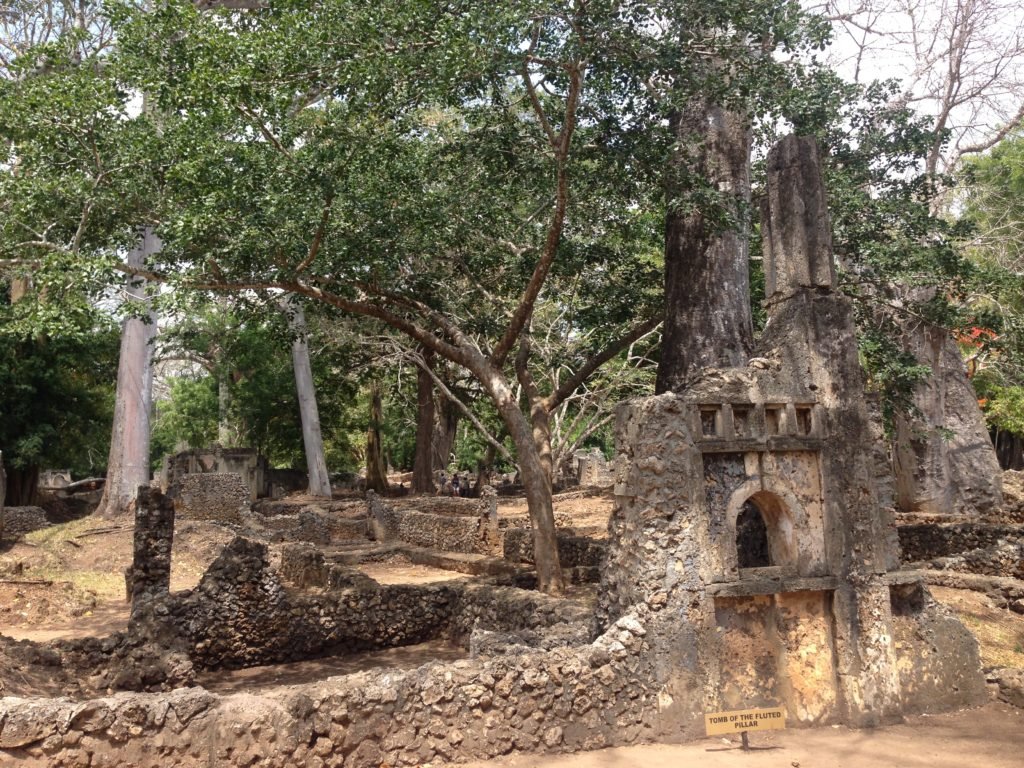
A lost Swahili city swamped with vines, you can reach it by any Malindi-bound matatu (Watamu village matatu stage), or, as I did, just hire a boda-boda to take you, wait for you, and bring you back.
Check out my story about wandering along the north coast (and exploring the ruins).
The Snake Park in Watamu is also really interesting. A guide can show you around and tell you about the many, many, poisonous snakes in the area, and some of the proceeds go towards procuring more anti-venom – it’s expensive stuff. Puff Adders really puff audibly, by the way.
Getting to Watamu
If you are continuing down the coast when you leave Lamu, then you should fly from Manda airport to Malindi on the mainland. Out in front of the airport there you can easily pick up a taxi and either take it into Malindi, or straight to Watamu. From Malindi’s New Malindi Bus Station, you can get a matatu to Watamu. You can probably just flag down a passing matatu on the road outside the airport, without going to the station first. It takes thirty minutes to an hour to reach Watamu depending on your transport.
Kilifi
Kilifi stands out in my mind because of some fantastic daytripping I did in the area. I stayed at Distant Relatives, a big hostel/eco-lodge with a really relaxing vibe, backing onto Kilifi Creek. There’s an isolated little beach a few minutes walk behind the hostel. They run sunset dhow sailing and snorkelling trips from here.
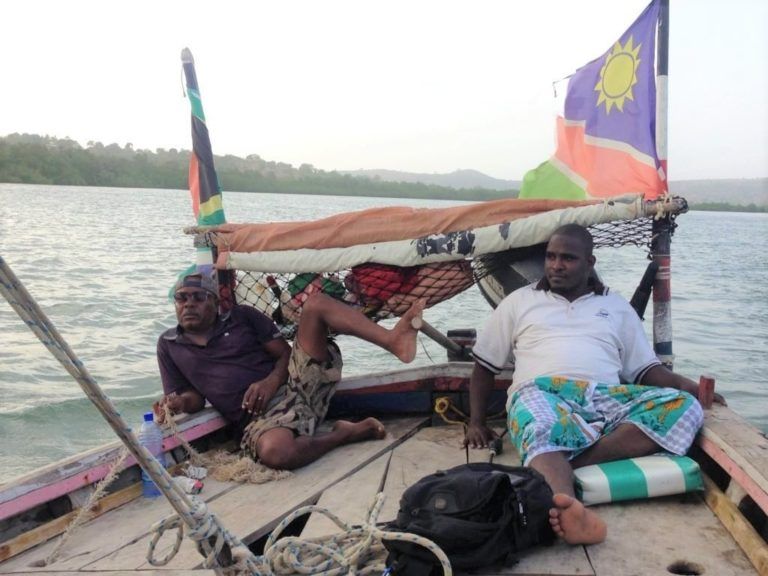
The absolute best thing I did around Kilifi was hire a boda-boda for a day to go exploring. Past the creek and the coral quarries, Juma showed me Vuma Cliffs where we scrambled over jagged rocks and watched the ocean crash against the cliffs below; and beautiful Bofa Beach.
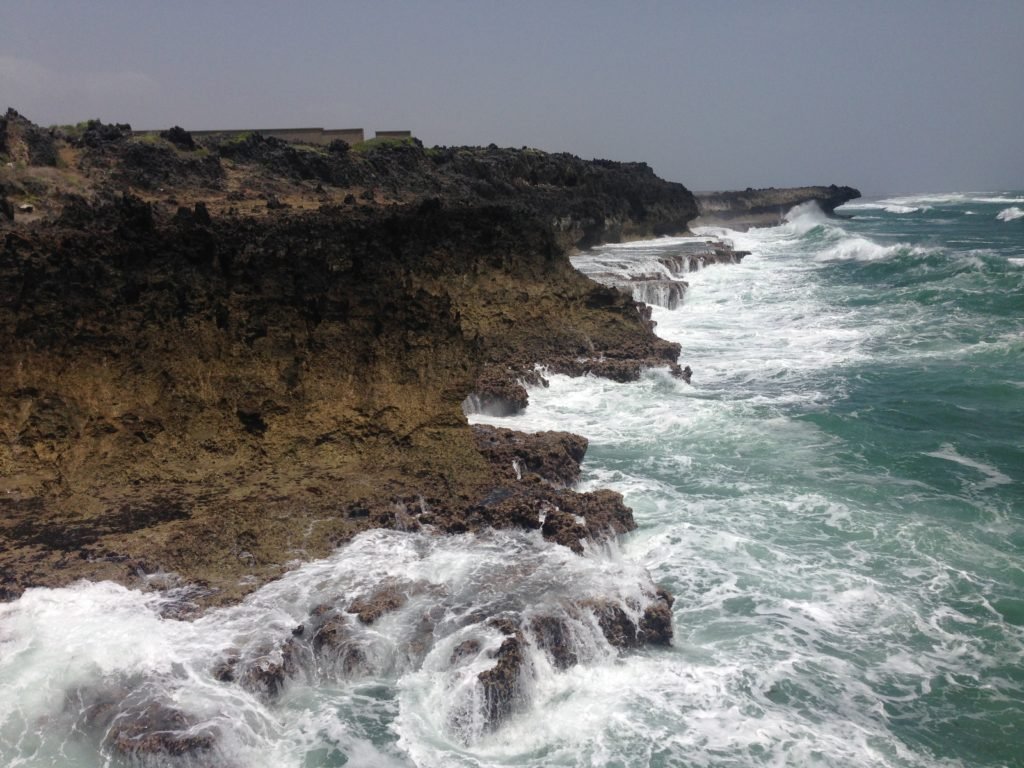
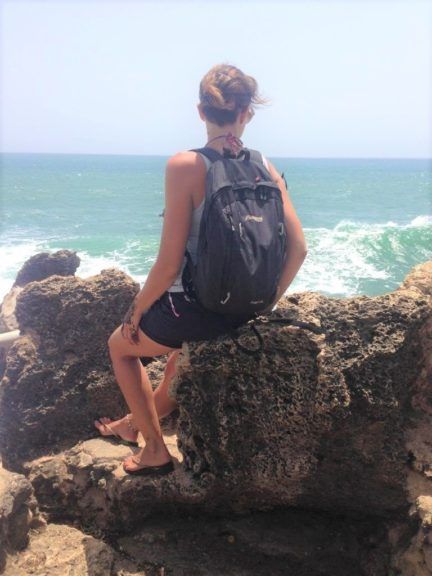
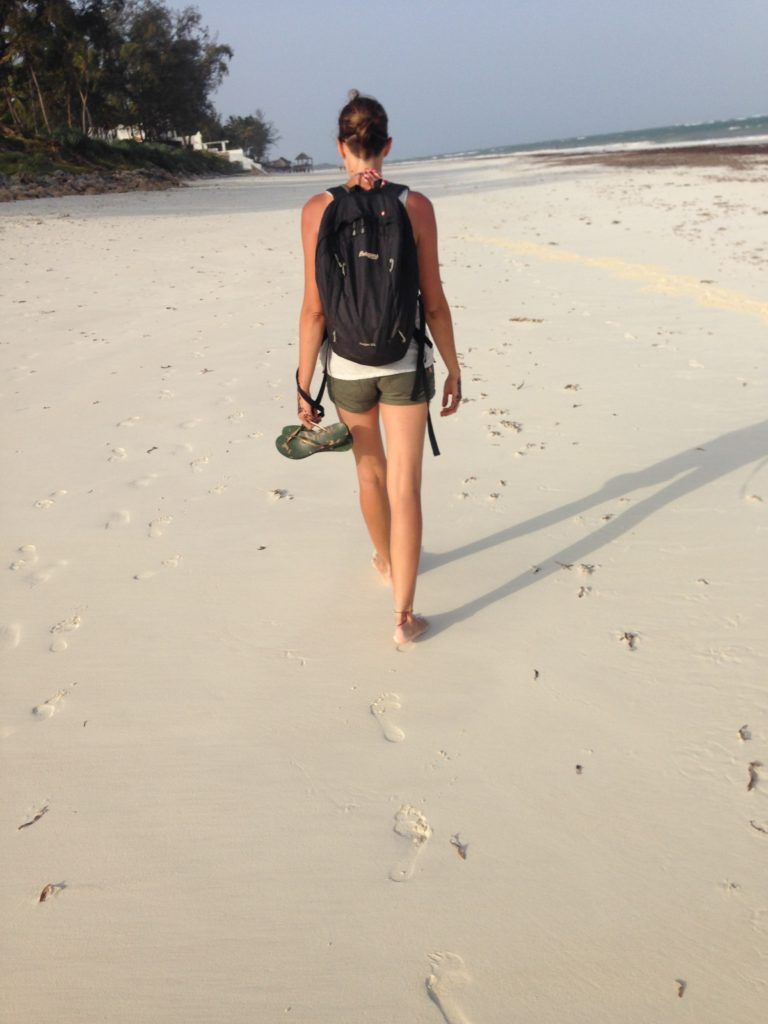
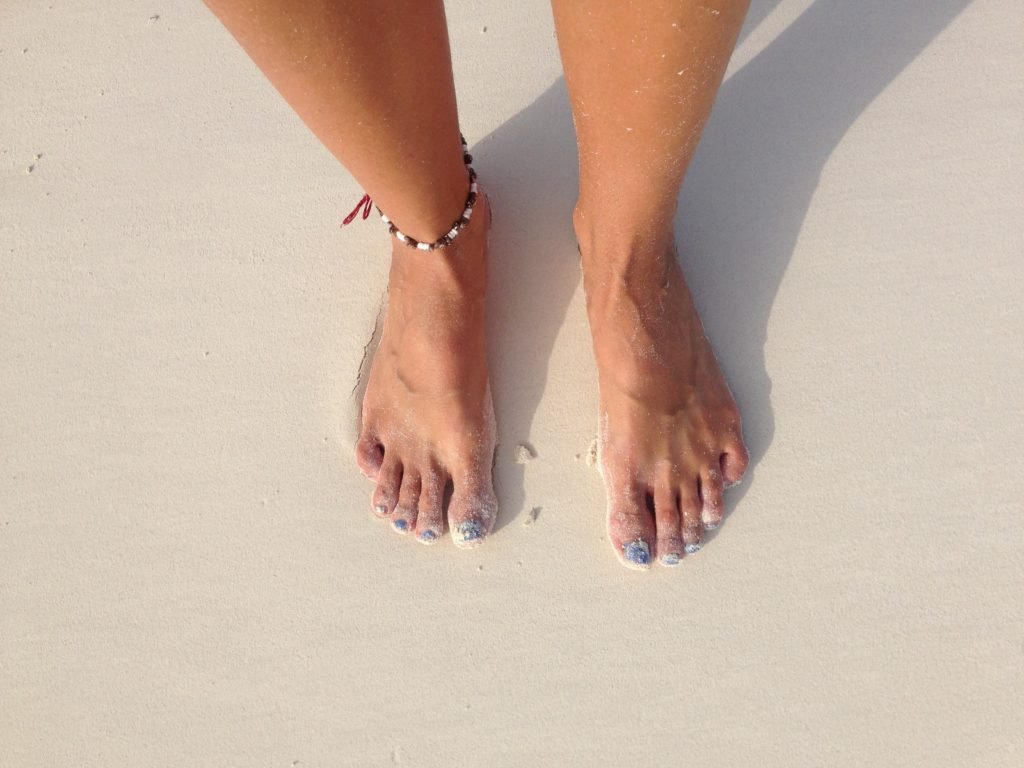
Here’s my story about wandering along the north coast (and daytripping by boda-boda).
Getting to Kilifi
From Watamu, get a boda-boda to take you to the matatu stage near the Gede ruins. There, you can get a matatu going to Kilifi. It takes about an hour.
Leaving Kilifi, your next likely stop is Mombasa. It’s only another hour away by matatu, which will drop you in the city on Abdel Nassar road.
The South Coast
Diani Beach
Traveling on the south coast is fun – you’ve got Mombasa first, a vibrant, thriving city. Get away from all that noise and chaos on an equally noisy and chaotic ferry. Hop into a crowded matatu and then buzz along a sandy road in a tuk-tuk and finally – there you are, at another pristine powdery white sand beach.
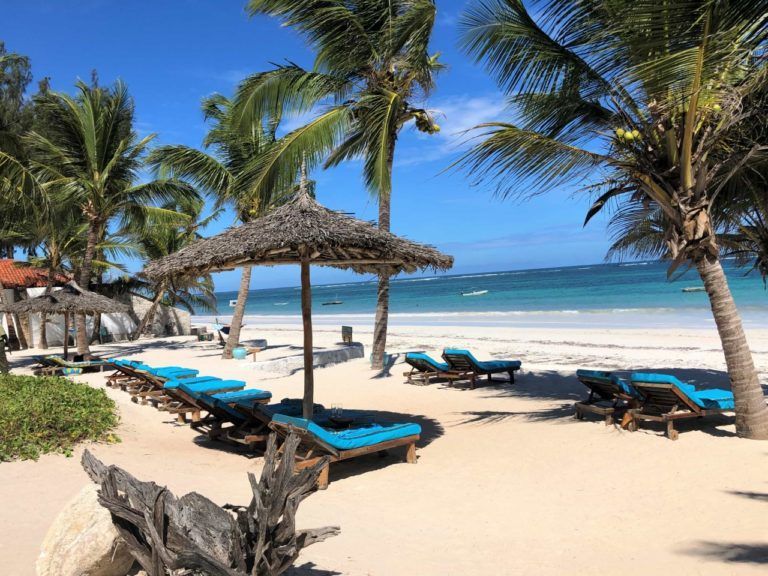
I stayed in my own treehouse in the forest at an eco-lodge called Stilts, on Diani Beach road.
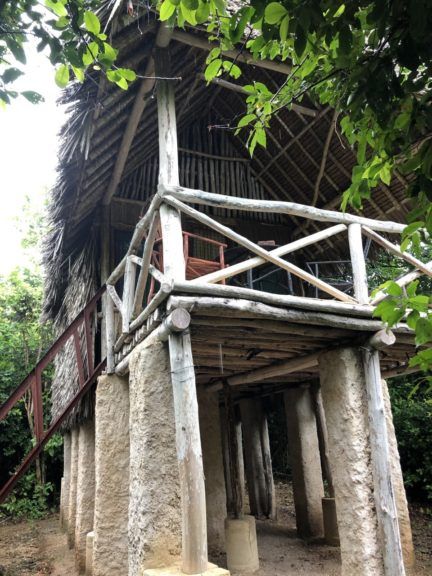
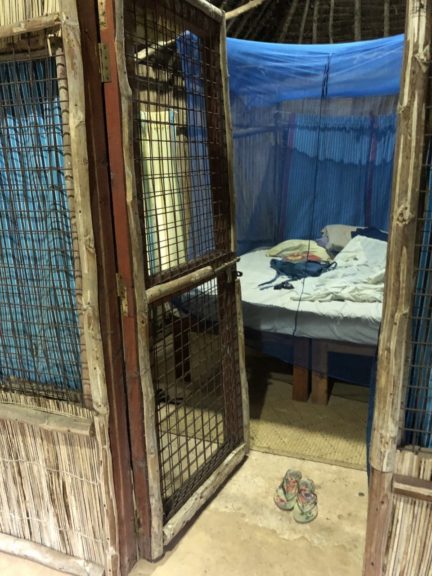
There’s a lofty restaurant in the main treehouse.
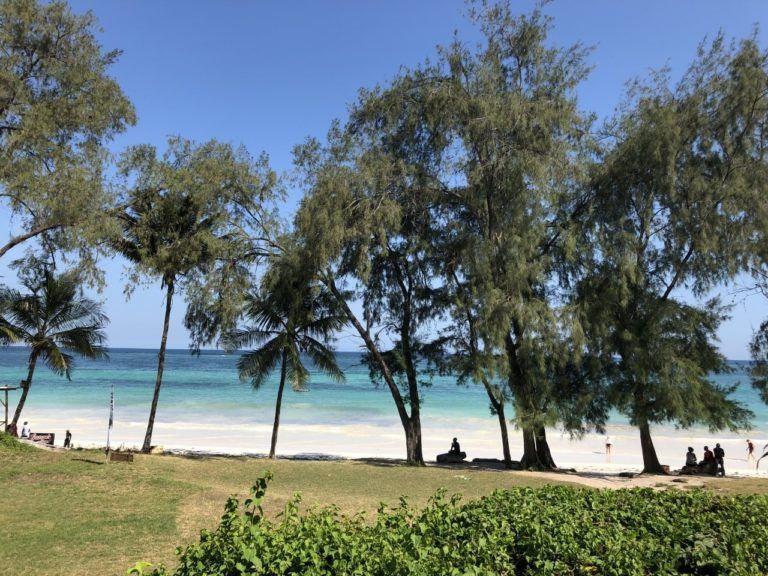
On our latest visit, we stayed at Flamboyant right across the road from Stilts. Flamboyant is a great option – reasonably priced, friendly, well-run small hotel right on the beach and with a pool. They also do good breakfasts.
Either way, wake up in a treehouse, or eggs benedict poolside: seriously, that’s how to start the day right.
If you want cheap, good local food, you’d head back to Ukunda (the town on the main road from Mombasa, where the transport starts and stops) – keeping in mind that you should not walk after dark. There are a couple of ATMs at the mini-mall on Diani Beach road, and some shops. In general there are tons of good restaurants up and down the road so you’re spoiled for choice. Don’t walk after dark though.
Boat ‘captains’ roam the beaches and with them or at any hotel you can easily arrange a snorkelling trip.
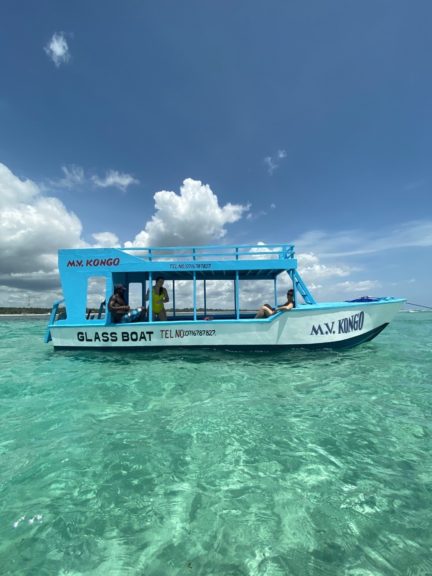
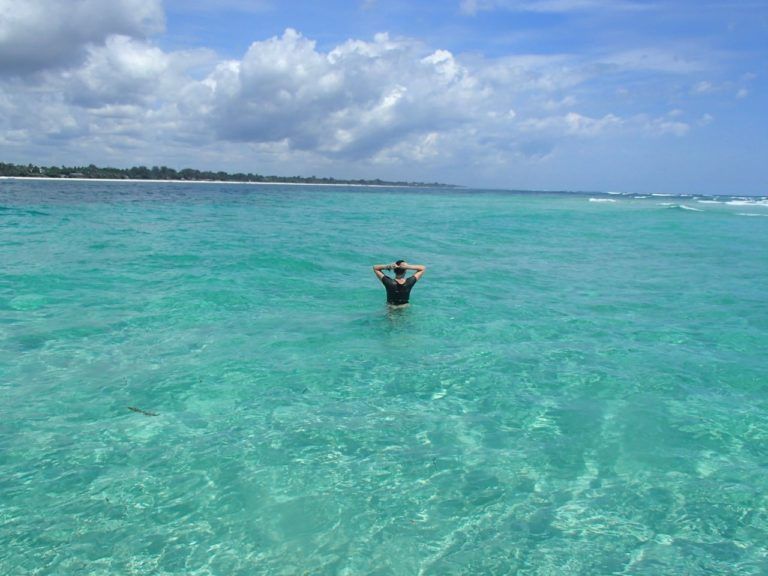
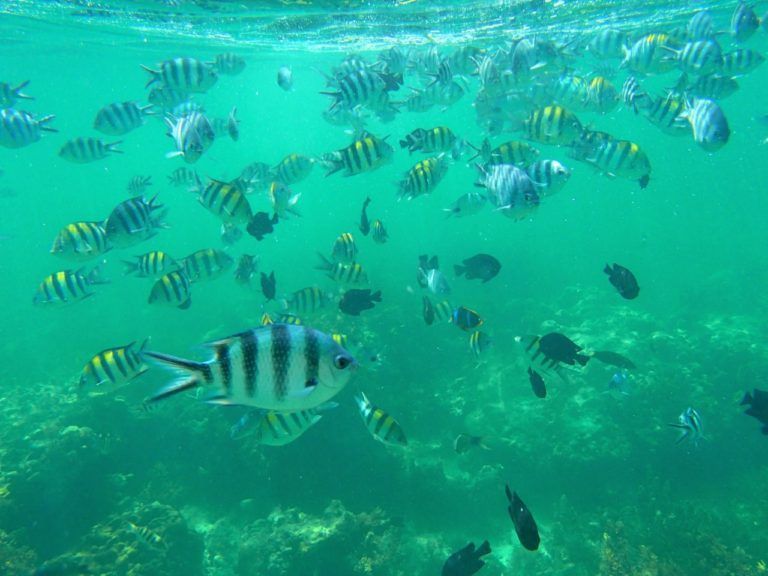
You might want to visit Kongo Mosque near Tiwi Beach (be prepared, it is mainly just some piles of coral).
Check out my story about wandering along the south coast.
Getting to Diani Beach
To get to Diani Beach from Mombasa, get yourself to the terminal for the Likoni Ferry. If you’re somewhere in the centre (Mombasa Island) you can take a Likoni matatu from Digo Rd/Nyerere Ave. to the matatu stage near the jetty. The ten minute ferry ride is free for foot passengers. It can get pretty crowded and boarding is a bit of a free-for-all but just watch your stuff and you’ll be fine. It departs about every thirty minutes in the morning, and less frequently after that.
Off the boat in Likoni, follow the crowd up the stairs to the stage where the buses and matatus depart from. Find a matatu going towards Ukunda. It’ll take about forty minutes to reach Ukunda where you should get out at the Diani junction (just tell the conductor where you are going, if he hasn’t already guessed), and grab a tuk-tuk or boda-boda the last bit to Diani Beach road.
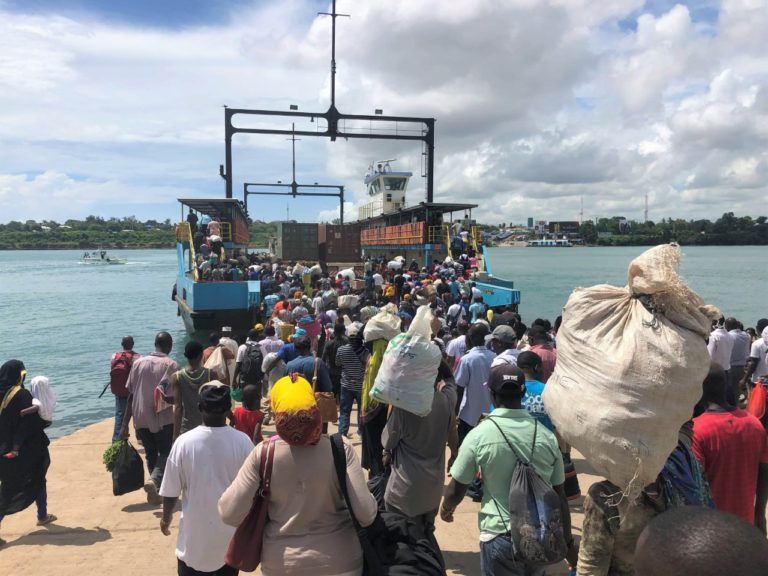
Wasini Island
To really get away from it all – like away from everything – you can go to Wasini Island. Most people visit Wasini as a stop on a day trip to Kisite Marine park, but you can sleep on the island. However there are very few options so to make sure the place is actually open, has food, and to arrange a boat pickup from the pier in Shimoni, you should call/email in advance. I called a few times before reaching the guy at Mpunguti Lodge; I ended up staying at Wasini Banda Porini which you can find online.
I got my own rustic banda in the woods. Meals, all home made in the tiny village were served in the main house.
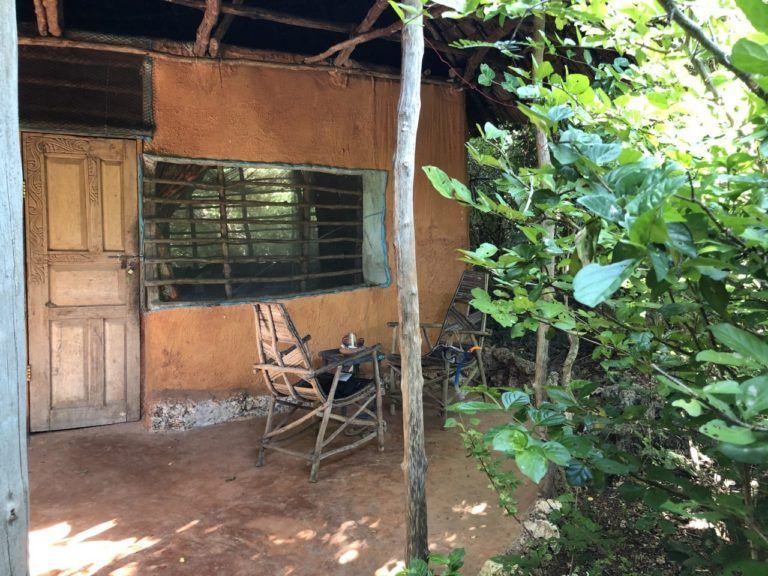
There is a little jetty and sort of beach in front of the guesthouse where you can swing in the hammock and chill.
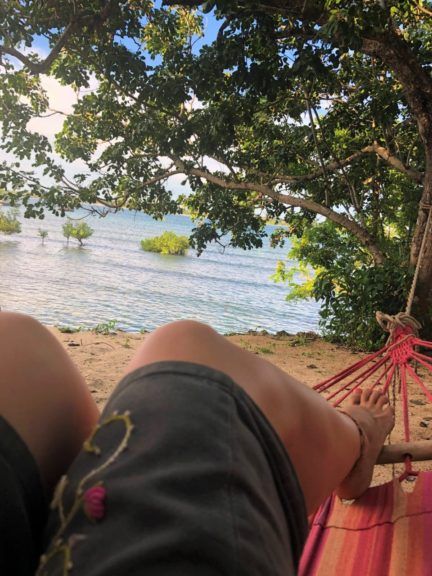
Wasini Banda will lend you snorkelling gear and you can just wade out from the end of the jetty and snorkel.
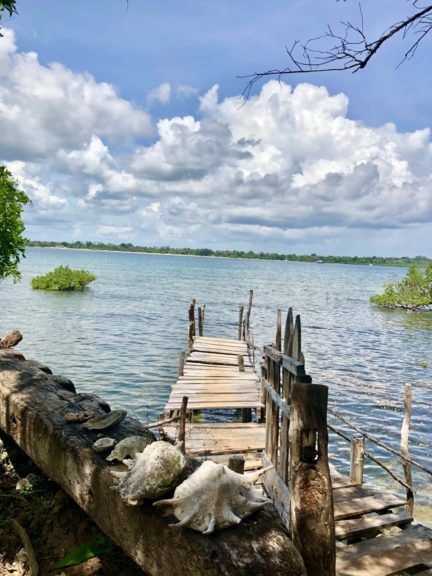
Wasini is pretty, but if you haven’t got time don’t worry about it. I read that it is like a ‘distant relative’ of Lamu and Zanzibar. No kidding, using that analogy I’d say it’s like a 5th cousin once-removed.
Bring your own drinking water (or buy it at the guesthouse). Obviously, you need to bring cash.
Check out my story about wandering along the south coast.
Getting to Wasini Island
You can book an expensive and crowded organised tour by bus-and-boat going from Diani (or even Mombasa) or you can just go by yourself to Wasini Island from Diani Beach.
First, get to Shimoni. A couple of buses per day go from Likoni to Shimoni, stopping at the matatu stage near the Post Office in Ukunda (even though the touts there will say otherwise). It takes about an hour and a half from there. The bus will stop right in the village. I’m not sure if there is a schedule, but they are more frequent in the morning.
You can also take a matatu from the same place in Ukunda. That will drop you at the junction for Shimoni, from where you can get a boda-boda for about 150 Ksh the last fifteen kilometers to Shimoni pier.
From the pier, you should have arranged a boat to pick you up and take you to the island. There are also guesthouses in Shimoni if you decide to just sleep there.
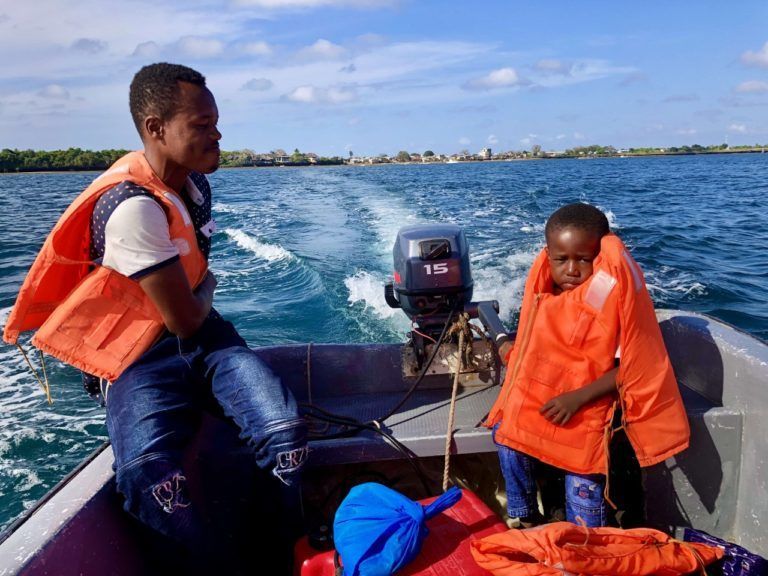
Lake Naivasha
Yes, I realise that Lake Naivasha is not on, or anywhere near, the coast. I’m including it here anyway beacause it’s nice and really easy to reach, and, because I can. The lake itself is pretty, it’s a serene setting, and a great break from Nairobi.
We stayed at Camp Carnelley’s – there are many around the lake but this one seemed very popular and it is really a great environment. You’re pretty much tied to their restaurant which is ok because it’s good. You can take boat trips on the lake to spot hippos (or spot them grazing on shore near the camp). There’s a small park, Crescent Island Game Sanctuary on an island, also reachable by boat from the camp. The camp office will set all that up for you. Also from camp, or plenty of places along the road out front, you can hire bicycles and bike freely in Hell’s Gate National Park amongst its (mainly herbivorous) wild inhabitants.
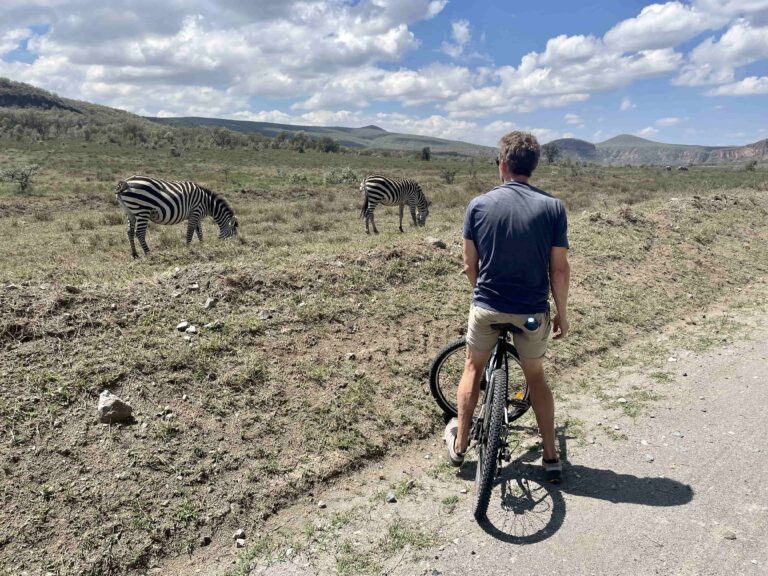
Getting to Lake Naivasha
Lake Naivasha is easy to reach – even all the way from Mombasa. For various reasons we ended up going between Mombasa and Nairobi a few times on our latest trip, and after living it up in an Airbnb in the capital for a second time, we wanted a quiet break.
To get tickets on the train between Mombasa and Nairobi you either need a local number and Mpesa to book yourself, or ask somebody who has it to book for you. In Watamu there’s a shuttle service called SGR Booking and Transfers who will book the tickets for you (for a small transaction fee) and book you on a shuttle directly from the beach to the station in Mombasa – that’s what we did. Coming back from Nairobi, we got our Airbnb host to book for us. In both cases, you get an sms with the booking reference and when you get to the station you need to print the ticket either at the ticket office or on the machines. For that you need the reference number and the phone number it was booked by.
Once we were in Nairobi, we took an Uber directly to the camp on the lake. It’s really just the simplest way and it cost only about 4500 KES. Or you can of course take a matatu from the CBD to Naivasha town and then get a taxi or another matatu to the camp (there’s a matatu that runs right past the camp entrance).
Both first and second class on the train are really cheap. First was always sold out or we’d have taken it for sure. Second is fine, but it’s 3×2 bench style seating and the backs are at a steep non-reclineable 90 degrees for the entire 6 hour trip. There are two trains a day and they seem to be pretty reliable.
Crossing the Border to Tanzania
After Wasini Island, I went back to the mainland and carried on to Tanzania (and beyond). If traveling to Tanzania is the next step in your journey too, you can read about it here: How to Cross the Border from Kenya to Tanzania
Read More
For more about my adventures (and misadventures) in Kenya, check out my stories from the road.



